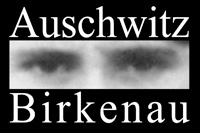




Concepts of the depopulation of Eastern Europe and their realization after the outbreak of the Second World War (1939-1945)
Plans for massive deportations of Jews and Slavs
Shortly after the outbreak of the Second World War, the German Nazis started removing Jews and Roma from Germany through deportations to occupied Poland. Due to the fact, however, that those areas were deemed to become German “living space”, different ideas regarding the resettlement of the population of Eastern Europe were considered, including the deportation of Jews outside Europe to the French island of Madagascar, and of the Slavs to Siberia.
The so-called Generalplan Ost or Master Plan East, a Nazi settlement and Germanisation plan for Eastern Europe, was developed on the request of the Third Reich’s authorities. To depopulate this German “living space” a small part of the population that was deemed “racially valuable” according to German eugenics theory was supposed to be Germanised. Most of the Slavic population was to be exterminated or resettled.
The plan also included approximately six million Jews living in Eastern Europe.
Plans for the sterilization of Slavs
In 1941 the topic of secret conferences in Himmler’s headquarters was the issue of mass sterilization. Those in attendance considered the best method for sterilizing an unlimited number of people in the shortest period and easiest manner possible. It may be presumed that this was to be an alternative solution of “clearing” German “living space” beside extermination and deportations.
During the July 1941 conference attended by Heinrich Himmler and Richard Glücks, Inspector of the Concentration Camps, the task to find the best sterilization method was vested upon professor Carl Clauberg, an authority figure within the treatment of female infertility.
Direct extermination of Jews and Roma
After great military successes in 1941, when the final conquest of Europe and the world seemed to be just a matter of time away, the Third Reich authorities decided to apply the most radical solution to the “Jewish Question” and to exterminate the entire Jewish population. All Jews, irrespective of their age, sex and their attitude towards the Nazi ideology and authority were to be murdered. The means of extermination policy included starvation in ghettos, executions and finally murder on an industrial scale in gas chambers.
As in the case of the Jews, the Nazis also intended to completely exterminate the Roma (Gypsies). Mobile killing units called Einsatzgruppen shot dead Roma in areas of the Soviet Union, while in Poland they were executed on the spot or killed with the Jews in the extermination centers. Roma from Germany, Austria, Bohemia and Moravia were also brought to those centers and ghettos. Most of them, however, were imprisoned in the Auschwitz concentration camp.
Murder of the Jews in direct extermination centers
In 1941, when the Nazis decided to annihilate millions of European Jews, the main places where the murder was to be carried out were the extermination centers equipped with gas chambers. This way of killing had already been tried out in 1939-1941 in Germany, where, within the euthanasia program, more than 70 thousand mentally disabled German citizens were murdered.
The key function in those extermination plans was held by Auschwitz (900 thousand Jews murdered), followed by: Treblinka (800 thousand), Belzec (435 thousand), Sobibor (200 thousand), Kulmhof (150 thousand) and, to a lesser degree, Majdanek (59 thousand).
Both Auschwitz and Majdanek were “atypical” extermination centers in the sense that they were organizationally and spatially combined with concentration camps under the same names:
- In Auschwitz, aside from 900 thousand Jews murdered in gas chambers, 200 thousand people died in the camp;
- In Majdanek, aside from 59 thousand Jews murdered in gas chambers, mass executions or in the camp, nearly 19 thousand non-Jewish prisoners also met their death in the camp.
Direct extermination centers were almost exclusively meant for Jews. They differed from concentration camps primarily in that aside from a small number of prisoners needed to handle the mass murder installations (operating the gas chambers and crematoria, burning bodies in the open air) and sort out the property plundered from the murdered, no other people were kept there and therefore no large numbers of barracks or other living quarters were necessary. The Jews brought to those centers were driven directly from the unloading ramp to the gas chambers and killed.
Nazi terror against Poles
Aside from murdering the Jews in extermination centers, annihilating the Roma and implementing long-term extermination plans concerning Slavs, the Germans theoretically killed only those Poles who actively fought the occupant or violated German laws. In practice, however, the occupation authorities obviously extended the repression goals farther than simply fighting the resistance, to include those merely suspected, or potentially dangerous, due to their social status. On that basis people classified as belonging to the so-called leading social class, mainly members of the Intelligentsia, were killed in Poland.
Those actions, having a form of pre-planned extermination campaigns, met all the prerequisites of genocide. Although sometimes attempts were made to invest them with a preventive and repressive significance, they were actually based, as suggested by the words of Nazi leaders, on deeper foundations, namely those of the cultural and intellectual degradation of the Polish nation through the removal of its Intelligentsia. Also of genocidal nature were all kinds of terrorist and repressive actions within the frame of collective responsibility such as pacifications, street arrests and executions of hostages. The aim was not only to incapacitate psychologically but also to physically decimate the whole population.
